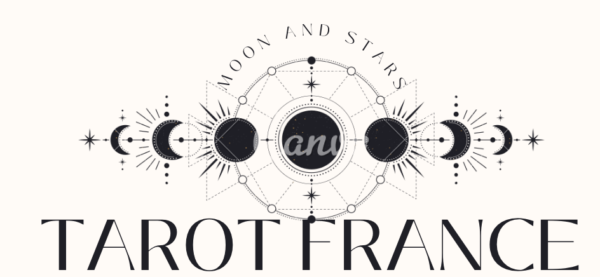Cholesterol is a fatty material that is vital for the regular performance of the body. It plays an important function in various bodily features such optiheart cena as hormonal agent manufacturing, cell membrane layer formation, and the synthesis of vitamin D. However, having high levels of cholesterol in the blood can boost the danger of developing heart disease and other associated problems. To examine this danger, medical care professionals frequently measure different kinds of cholesterol, consisting of non-HDL cholesterol. In this article, we will certainly discover what non-HDL cholesterol is and why it matters for your health and wellness.
What is Non-HDL Cholesterol?
Non-HDL cholesterol describes the total cholesterol minus the high-density lipoprotein (HDL) cholesterol. It includes low-density lipoprotein (LDL) cholesterol, very-low-density lipoprotein (VLDL) cholesterol, and various other non-HDL bits. Unlike HDL cholesterol, which is considered “good” cholesterol due to its capacity to remove excess cholesterol from the bloodstream, non-HDL cholesterol makes up numerous lipoproteins that add to the formation of fatty deposits in the arteries.
Non-HDL cholesterol is an useful pen for assessing the risk of cardiovascular disease since it encompasses all the cholesterol-containing fragments that can add to the advancement of atherosclerosis. Atherosclerosis is a condition defined by the build-up of plaque in the arteries, tightening them and also reducing blood circulation to essential body organs, consisting of the heart and brain.
The objective of handling non-HDL cholesterol is to keep it within a desirable range to lessen the risk of establishing heart problem and also related difficulties.
Why Non-HDL Cholesterol Matters
Non-HDL cholesterol is thought about a more precise forecaster of cardiovascular disease risk than LDL cholesterol alone. It offers a comprehensive assessment of the cholesterol web content in the blood and also reflects the cumulative impact of all cholesterol-rich particles that contribute to atherosclerosis.
High degrees of non-HDL cholesterol have actually been highly related to an enhanced risk of establishing cardiovascular disease. Study recommends that for each 1% boost in non-HDL cholesterol, the risk of cardio events, such as heart attacks and strokes, boosts by about 2-3%. Consequently, managing and preserving healthy and balanced non-HDL cholesterol degrees is crucial for protecting against cardio issues and also advertising overall heart health.
Monitoring non-HDL cholesterol can additionally aid in examining the performance of cholesterol-lowering therapies, such as way of life adjustments and also drug. By regularly examining non-HDL cholesterol degrees, healthcare experts can evaluate if the suggested interventions achieve success in decreasing the risk of heart problem.
Just How to Interpret Non-HDL Cholesterol Degrees
Non-HDL cholesterol levels are generally assessed together with other lipid profile dimensions, including overall cholesterol, HDL cholesterol, and also triglycerides. The adhering to table provides a basic guideline for analyzing non-HDL cholesterol degrees:
- Desirable: Much less than depanten мнения 130 mg/dL
- Borderline high: 130-159 mg/dL
- High: 160-189 mg/dL
- Very high: 190 mg/dL or above
It is necessary to keep in mind that these values may differ relying on private circumstances, such as the visibility of other risk variables or existing medical problems. Constantly speak with a healthcare specialist for an exact analysis of your non-HDL cholesterol levels as well as customized recommendations.
Handling Non-HDL Cholesterol
Lowering non-HDL cholesterol levels is a key part of stopping as well as handling heart problem. Way of living modifications as well as, if necessary, medication can help achieve as well as preserve healthy cholesterol levels.
Way of living Alterations:
– Adopting a heart-healthy diet regimen: Integrate fruits, vegetables, whole grains, as well as lean healthy proteins while limiting saturated and also trans fats, cholesterol, and sodium.
– Taking part in routine physical activity: Go for a minimum of 150 minutes of moderate-intensity aerobic exercise weekly, or 75 minutes of vigorous-intensity exercise, together with strength training exercises twice a week.
– Keeping a healthy weight: Losing excess weight can aid improve cholesterol levels as well as total cardio health and wellness.
– Staying clear of tobacco and excessive alcohol usage: Cigarette smoking problems capillary and lowers HDL cholesterol, while extreme alcohol consumption can increase blood pressure as well as triglyceride levels.
Drug:
In many cases, way of living modifications may not be sufficient to achieve optimal non-HDL cholesterol degrees. Your health care specialist may prescribe cholesterol-lowering medications, such as statins, ezetimibe, or PCSK9 preventions, to aid handle your cholesterol levels. It is essential to follow your health care professional’s assistance as well as take medicine as prescribed.
To conclude
Non-HDL cholesterol is a valuable marker for analyzing the risk of heart problem as well as plays an essential role in maintaining cardio wellness. Surveillance and handling non-HDL cholesterol levels through way of life modifications and also, if required, drug can help in reducing the danger of cardiovascular disease and promote general health. Remember to talk to a health care professional for tailored recommendations and also recommendations based on your specific health and wellness profile.
